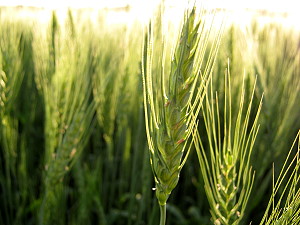 Northwest Region Crop Report Prepared by: Manitoba Agriculture, Food and Rural Initiatives GO Teams & Crops Knowledge Centre August 6, 2013 |
Northwest Region Crop Report Prepared by: Manitoba Agriculture, Food and Rural Initiatives GO Teams & Crops Knowledge Centre August 6, 2013 |
Northwest Region
Temperatures were moderate to below seasonal throughout the Northwest Region, with occasional overnight lows of 6 to 8 degrees Celsius. A few light scattered rain showers affected the Swan River area mid-week. Late in the week the Dauphin to Grandview areas had rain accumulations of 17 mm with higher amounts in some localized areas. With the moderate drying conditions, in most sectors 10 to 30% surplus moisture conditions still remain.
Crops continue to advance under below seasonal temperatures and generally adequate moisture conditions. Overall, area crop yield potentials are better at Swan River Valley and the southern sector from Roblin through Ste Rose. The Pas, Ethelbert and Fork River areas have been more impacted by excess moisture through the growing season and the yield potentials are only fair to poor.
Winter wheat is ripening with harvest anticipated shortly. Canola, oats and barley are rated at 70 to 90% excellent. Canola acres are 50% fully podded, 20% is at full flower and the remainder is at various stages of podding. With continued below average temperatures, corn and soybeans are developing more slowly with 60 to 70% of acres rated fair to good. Up to 60% of the soybean acres are at R3, with most of the remainder through the Ste. Rose area at R4 to R5. Perennial rye grass is being swathed.
Symptoms of fusarium head blight and sclerotinia is reported across the region. No reports of bertha armyworm control were received from the moderate-rated risk area north west of Roblin and parts of the Swan River Valley. Grasshopper activity is low and generally on lighter pastures soils and ridges.
Haying conditions improved the past week. Overall, the tame forage acres are approximately 75% baled and 25% has been cut; generally, average yields are reported. Forage quality is variable, rating from good to poor. The native hay harvest has begun in the accessible drier fields. Through the Westlake area, 50 to 75% of the low lying native hay lands adjacent to the lakes will have little potential for production because of wet and inaccessible fields.
Pastures are rated as fair to good in most areas. Dugout water levels are full in all areas.
